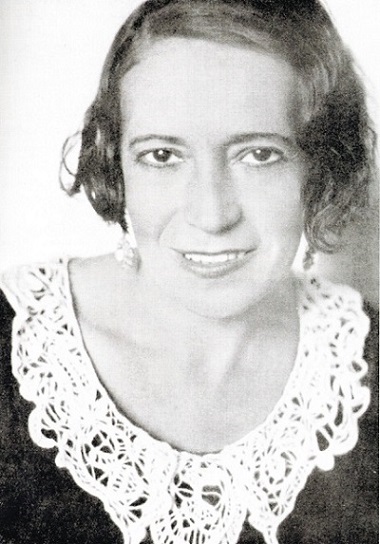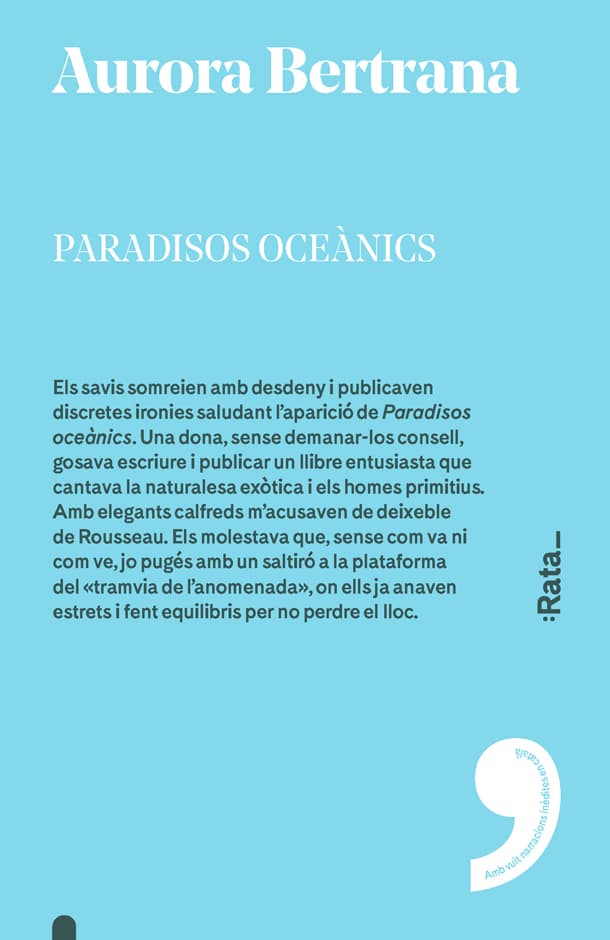Paradisos oceànics (Oceanic Paradises)
With her words, Aurora Bertrana was able to make the world a tad smaller. Polynesia was a land remote, lost, unimaginableuntil she went there; until she set sail to Papeete and began sending her writings on Oceania to Catalonia, Europe. This took place in the late 1920s. Bertrana, then forty-four, arri�ved in that exotic, utterly strange place and, for three years,devoted herself to describing its nature and writing about itspeople. She wrote most of all about the women: about forced marriages, motherhood without strings, free love. She traveled because she was both searching for something and trying to escape something. Ever since she was a child, Aurora had hidden in her grandfather’s library to read: but there was�n’t enough for her in her village. She was escaping the life her mother had pictured for her when she taught her to sew, to embroider, to knit, so that she would become a respectable lady. A cellist, she’d no interest in busying her hands with children
and needles. She’s rather use them to play jazz and to write stories that transported her readers to ocean paradises with descriptions as evocative and striking as: “The green of the flo�ra looked like it was recently painted, still wet and gleaming with varnish.”
A European phenomenon unlike any other. The publication of Paraísos oceánicos in 1930 was an
immediate sales phenomenon and consecrated its author as the travel writer. Which is understandable – the literary renditions of the experiences Aurora Bertrana amassed between 1926 and 1929 in Papeete – the capital of French Polynesia and a month-and-a�half’s travel from Barcelona – turned her into an unparalleled European phenomenon. Paradisos Oceànics was soon translated into Spanish, expanded by the author, and published under the title Islas de ensueño. A couple of years later, it was translated into French as Fenua Tahiti. Vision de Polynésie (Delachaux & Niestlé, 1943).
“In Paraísos oceánicos, which collects the chronicles the author wrote in Papeete, a kind of storytelling that is hard to come by today, lives on. It may be that the excess of photos and videos in the twenty-first century has deprived us of a taste for the meticulous description of landscapes; of what we hear and feel in them; and even of their smell, though no image could express it better than a handful of fitting words.”
The book Includes photographs of Polynesia taken by the author for the 1933 edition of Islas de ensueño (Island of Dreams), a chapter of her memoirs, and eight unpublished stories.
Non-Fiction
Rata


